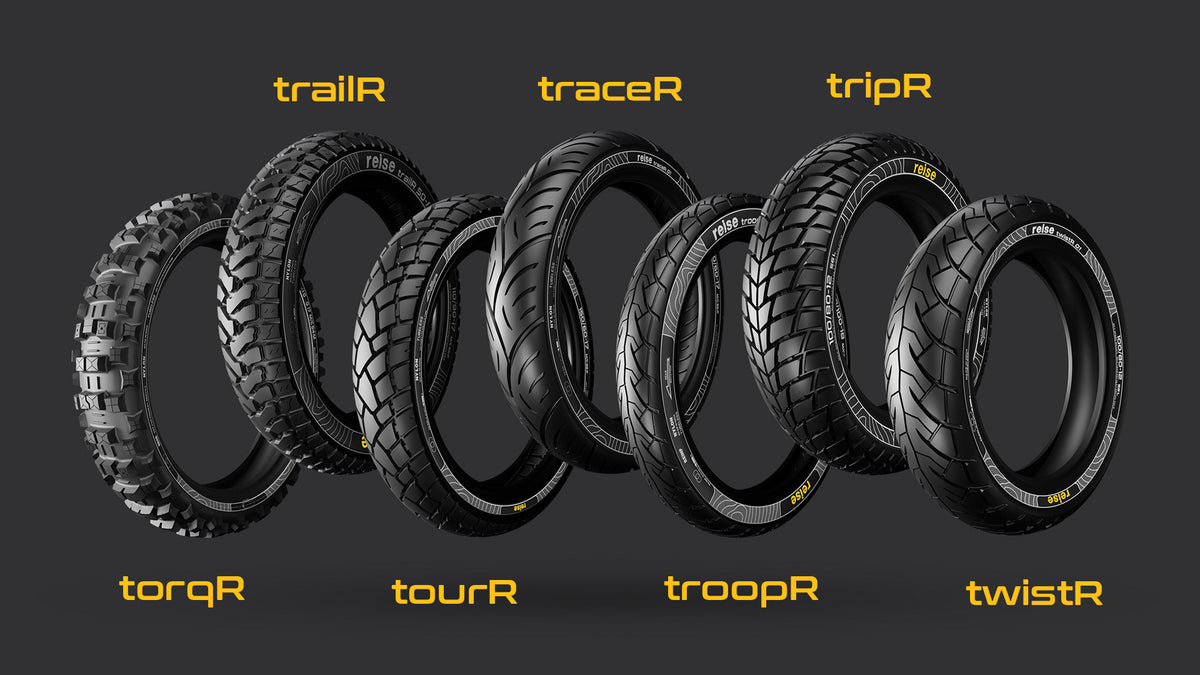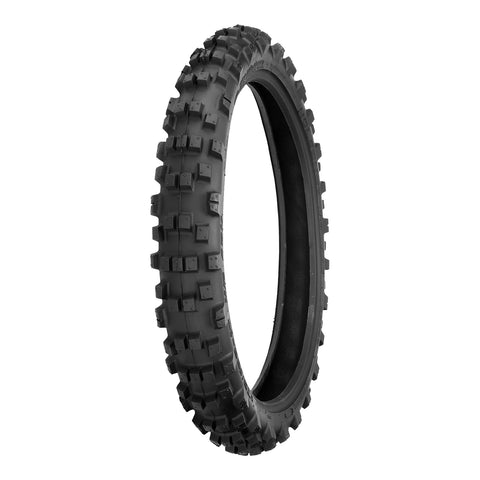Take on challenging riding conditions with premium Adventure Motorcycle Tyres.
Take on challenging riding conditions with premium Adventure Motorcycle Tyres.
Blog Article
All Concerning Motorcycle Tyres: A Comprehensive Guide for Lovers
For motorcycle enthusiasts, recognizing the complexities of their maker's tyres is a vital facet typically forgot. This guide, 'All Regarding Motorcycle Tyres', unlocks the elaborate globe of tyre kinds, sizes, and requirements, all directly affecting performance and safety and security.
Recognizing the Basics: Different Types of Motorbike Tyres
In the world of motorcycling, tires play a crucial function, not just in ensuring a risk-free adventure however likewise in enhancing the total performance of the bike. They can be found in various types, each created for certain riding conditions and efficiency demands.

After that there are dual-sport tyres, which offer an equilibrium between on-road stability and off-road grip. Lastly, competing tires, used for track racing, provide optimal grasp but have a very brief life-span.
Recognizing these kinds and their specific functions aids bikers pick the right tyre for their riding design and problems, thereby making sure ideal performance and safety. Such understanding develops the foundation before diving into tire sizes and specs.
Exactly How to Decode Your Motorbike Tire Size and Requirements
Having a strong understanding on the various sorts of motorcycle tires leads normally to a deeper understanding of their dimensions and specs. This understanding is vital for maintaining optimum efficiency and security. The tyre's dimension and specifications are typically indicated on the sidewall. The initial number stands for the size of the tire in millimeters. The 2nd number, following a lower, is the facet ratio or the height of the tire's sidewall expressed as a percentage of the size. The last number, if it's preceded by an 'R', suggests the rim size in inches.
Certain letters may follow these numbers, signifying speed score and lots index. 'M' represents an optimal rate of 130km/h, while '70' suggests a tons carrying capacity of 335kg. Such intricate information can dramatically influence a motorbike's performance. Therefore, it's important for cyclists to recognize how to decipher their motorbike tyre size and requirements.
Selecting the Right Tyre for Your Riding Design and Problems
Choosing the appropriate tyre for your motorcycle is not a choice to be taken gently. It's critical to think about the kind of riding one does usually; whether it's travelling, exploring, off-roading, or sports riding, each style requires a different type of tyre. Sporting activity bikers may opt for performance tyres that supply excellent hold and rate, while travelers might like tires designed for toughness and comfort.
For damp and snowy problems, tires with deep step patterns and softer rubber substances are perfect as they give far better hold and traction. Ultimately, recognizing your riding design and the problems you'll face aids in choosing the best tire, boosting both safety and security and performance.
Tips for Maintaining Your Motorbike Tyres for Ideal Performance
Properly keeping your motorcycle tires significantly enhances their efficiency and durability. Routine assessment is a vital part of this procedure. Riders ought to look for indications of wear and tear, such as cuts, punctures, or uneven wear patterns that may suggest positioning issues.
Cleaning is another important element of tire upkeep. Removing particles and crud not only improves the tyre's appearance yet likewise protects against premature wear. A gentle scrub with a soft brush and soapy water is usually adequate.
The role of tire rotation can not be marked down. By rotating the tyres' placements, one can make certain even use and prolong their life expectancy.
Finally, the rider ought to always check the tyre's tread depth. A shallow step can compromise hold, leading to hazardous riding problems. To this end, numerous nations have lawful minimum tread depths, and motorcyclists are motivated to adhere to these guidelines for safety and security.
The Effect of Tyre Stress on Your Riding Experience

Recognizing Tyre Pressure Characteristics
While it could seem an unimportant aspect to some, tyre stress plays an essential duty in the overall riding experience of a motorcycle. Motorbike Tyres. It influences grip, dealing with, fuel economic climate, and trip comfort. Over-inflated tyres can make the trip harsh and bumpy, while under-inflated tires can cause poor handling and increased fuel intake. Tyre stress additionally affects the tyres' contact spot - the area of the tyre that touches the ground. A larger contact patch causes far better grasp but additionally quicker tyre wear. Conversely, a smaller sized call spot read the article may prolong tyre life yet compromise on grip. Recognizing these characteristics can help motorcyclists make notified decisions about tyre pressure, boosting both performance and security.
Changing Stress for Performance

(Road Bike Tyres NZ)The perfect stress varies with lots, roadway problem, and riding design. For optimum performance, it's critical to speak with the manufacturer's recommendations, usually engraved on the motorcycle or in the owner's handbook.
Routine checks making use of a reputable pressure scale are crucial. As weather condition influences stress, adjustments need to be made when tyres are cold. Therefore, understanding and using appropriate tyre stress modifications dramatically enhance a biker's experience, promoting safety and security and performance.
When and How to Replace Your Motorbike Tyres Securely
Making certain the safety and security and performance of your ride, normal assessment and prompt substitute of motorcycle tyres is a job of utmost relevance for every bicycle rider.
Tyres ought to commonly be changed every 5 to 6 years, or when the tread depth gets to 2mm. Aspects such as driving behaviors, road problems and tyre upkeep can influence this timeframe. It's vital to on a regular basis check tyres, seeking signs of wear and tear, punctures or deformities.
Replacing a tyre calls for unique tools and understanding. The new tire has to be appropriately straightened and inflated to suggested pressure.
It is usually a good idea for less experienced bikers to have actually tires replaced by professionals. This ensures safety and security and maximises performance, underscoring the significance of tire upkeep in bike usage.
Conclusion
To conclude, recognizing the complexities of bike tires, from kinds to dimension specifications, plays an essential duty in boosting riding experiences. Making informed options based on riding style and conditions, coupled with proper upkeep and understanding of tyre pressure, can dramatically improve performance and security. Lastly, understanding when and exactly how to change tyres makes sure cyclists can continue to enjoy their bike experiences with miraculous confidence.
Report this page